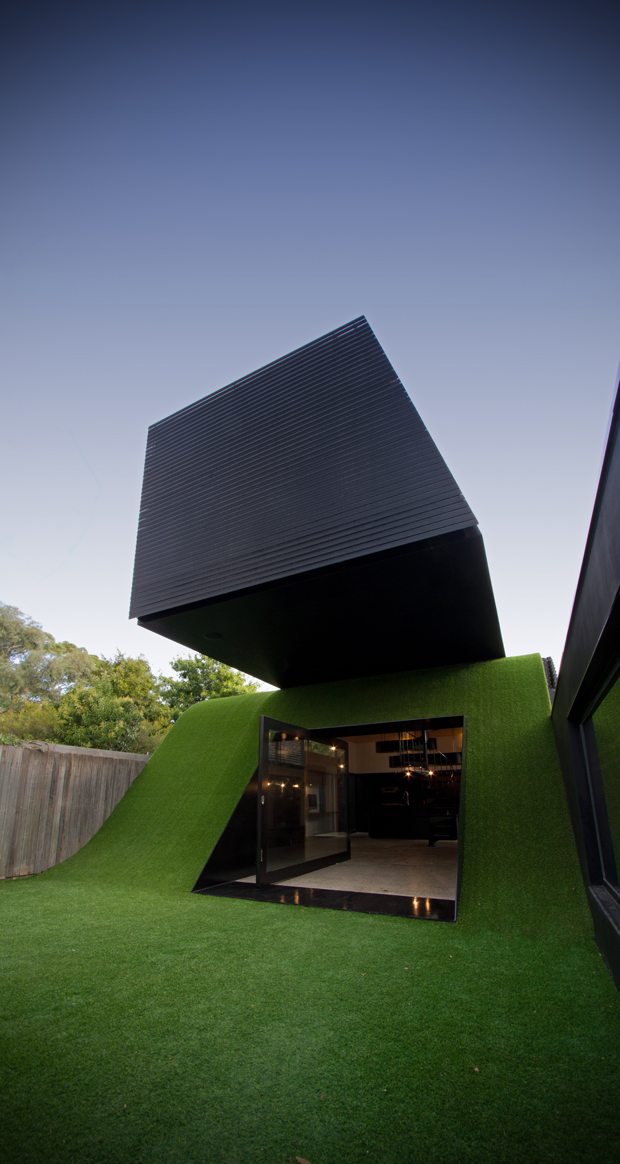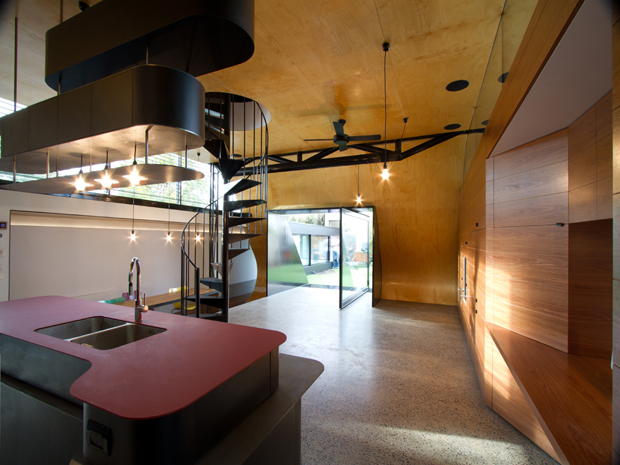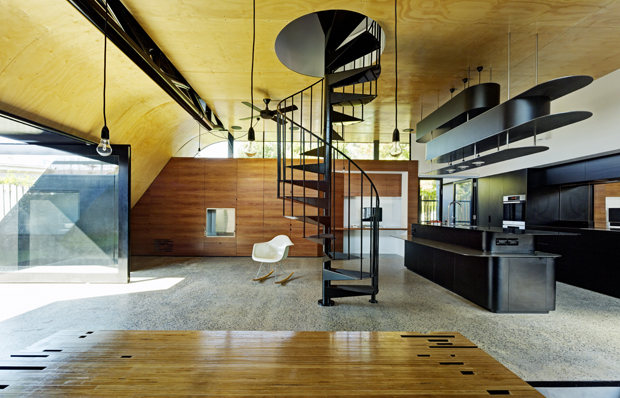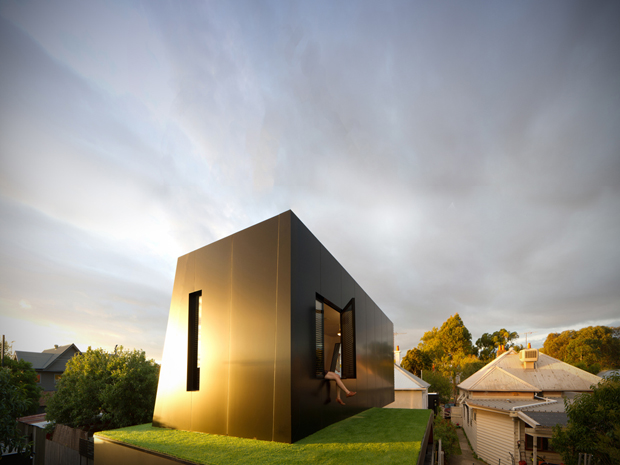A cantilevered structure rests on top of a building, impressive but not imposing, looming over the backyard of the aptly named Hill House.
Designed by Andrew Maynard Architects, this great black monolith is an unorthodox response to the solar access constraints that come hand in hand with the thin allotments dominating the houses of Melbourne’s northern suburbs.
“Strategically the architectural celebration of the pure cantilevered form acts pragmatically as the passive solar eave to the outdoor space below, cutting out summer sun, while letting winter sun flood in,” says Andrew Maynard.
This second-storey box is a continuous, full height steel truss cladded with Alpolic Aluminium, tied down and grounded by concealed steel posts travelling into the kitchen below. The unique ‘hill slopes’ featured on site activate the ubiquitous modern structure, and act as a meeting point for the residents to lounge and play.


Artificial turf by Greenplay Australia is used on the external cladding over Ardex Australia’s butynol water proof membrane, an exposed concrete block and a fibre cement sheet painted with Dulux satin acrylic black. The Lyasaght Kliplock roofing has a white Colorbond finish, which increases solar reflectance.
It is hard to forget the monolith or ‘hill’, but the internal spaces of the house manage to hold their own, offering the family and guests relaxed living areas.

In the kitchen, dubbed the ‘nerve centre’ of the house, benchtops are made of steel to reveal a beautiful patina of age. A Phoenix Paint top coat, the two pack water-based Maxicoat, is painted over an undercoat of metalfix 1000 – a water-based primer designed for application on non-rusted surfaces.
According to Maynard these Phoenix coatings, having originally been produced for the mining industry in Western Australia, were a truly innovative application.
“The paint was sourced due to its two part (industrial) level of protection but was water-based, which reduced VOCs around food preparation areas. It was selected as a suitable product over steel that would provide a low sheen black finish.”

A-grade hoop pine and spotted gum internal timber lining is also employed throughout the home, finished with Feast Watson low sheen tung oil. The plasterboards are painted with Dulux satin acrylic Dalmatian.
The floors are polished concrete with a water-based clear sealant, while some steel trims and details on the steps and reveals have a Dulux black enamel colour.

“The paints, stains and coatings are essential to the level of finish,” notes Maynard on the project, adding that the products were selected based on research and advice from suppliers and installers.
“The materials that are being covered can be enhanced with the right coating selection. Otherwise you are running the risk of the material deteriorating at a far quicker rate or having an artificial or sub-standard appearance.”
And so it is. While architecture and design are immediately associated with structure or forms, high-quality paints, stains and coatings that look good, are low maintenance and have a long design life can add further design value to a home with an already stunning monolith and interesting hill slopes.

Photography by Peter Bennetts, Nic Granleese and AMA.
Courtesy of Andrew Maynard (@AndrewMaynard)

